By Ramon Forster • Aug 27, 2020
Without Nonprofit Organizations (NPO) or Nongovernmental Organizations (NGO), we’d all be worse off. An estimated ten million NPOs of all sizes take care of world around us: nature, the environment and animals. They also look after people in difficult situation such as those who are neglected or abused, live in poverty, are threatened by war or violence, lack access to education, health care, rehab or other resources for constructing a better living.
Lots Of Content, For Lots of Good Reasons
NPOs require a content system for managing an ever growing quantities of, mainly file-based, content that they generate about the projects, programs or missions which they carry out and of course about their organizations themselves:
- Documentary images from their projects or events.
- Videos from workers out in the fields, interviews, and similar.
- Images of fundraising in the streets, inauguration events, conferences and more.
- Brochures that summarize missions, projects and ways to donate.
- Annual reports with project overviews, successes and financial information.
- Portrait pictures of founders, staff, volunteers, ambassadors, and other key people.
- Training and educational material for staff in the field, and for those that assist.
- Posters that campaign around certain topics for which the non-profit is focused upon.
- Logos and branding material of their own, and from partner organisations.
- And much more.
This content is created, then managed mainly for the purpose of raising funds and levels of trust from a variety of sources: new and existing members, for applying for government grants, and for documenting their work for which they are accountable, e.g. for retaining their tax-exempt status.
Working Under Difficult Circumstances
NPOs operate with a very thin administrative overhead, and as such, they have very scarce financial and human resources - simply because they strive to bring in as much funds to work for a community as possible. Having cost effective, automated content management processes in place is important for this reason.
By far, the largest amount of their content is created around projects, programs or missions. Images and videos are often created directly by staff in the field since only a few NGOs can afford access to professional photographers while travelling.
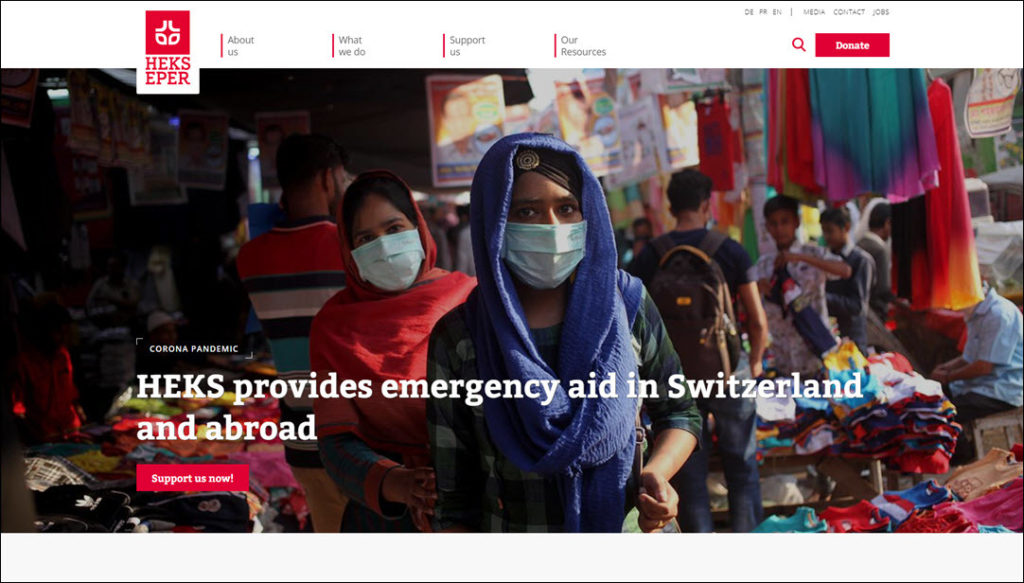
The primary duty of those working in the field is to help people, not to manage content. Rarely will these workers spend time renaming files or go into comprehensive tagging: making a selection of the content and uploading it into the content system, over an all-too-often unstable Internet connection, is the typical experience.
Getting it Done with Just a Single Tag
However, content should always be tagged or there is a risk that it will get used erroneously - especially critical when it relates to sensitive Personal Identifiable Data (PID) that requires consent prior to publishing.
Fortunately, modern content systems can address these use cases. The Picturepark Content Platform for instance requires nothing more than just a single ‘smart’ tag for covering the basics. And if consent is required then an additional workflow can be invoked for making the non-profit compliant with privacy regulations.
Find Content the Way You Want
Using a single smart tag, content becomes related with projects which is semantically related to all the other important information related the project such as country, topic, codes and much more, as described above. This benefits not only you when importing or managing the content but foremost the search techniques from different types of users of your content system, such as:
- Fundraisers that research content on a specific topic for a newsletter.
- Project directors that file reports for projects which they are responsible for.
- Content managers that should approve recently uploaded project content.
- Communication managers create the annual report for projects active that year.
- Public relation managers who research project content for press releases.
- Press users that cover the work in the media, and search along current hot topics.
- Downstream systems such as the Web CMS that needs to show project overviews based on topics.
- Other staff that search for certain keywords for presentations, education, and more.
These users don’t just find their content much more reliably via full-text searches with their primary keywords - they can also explore the content via different views that are tailored to their particular use cases.
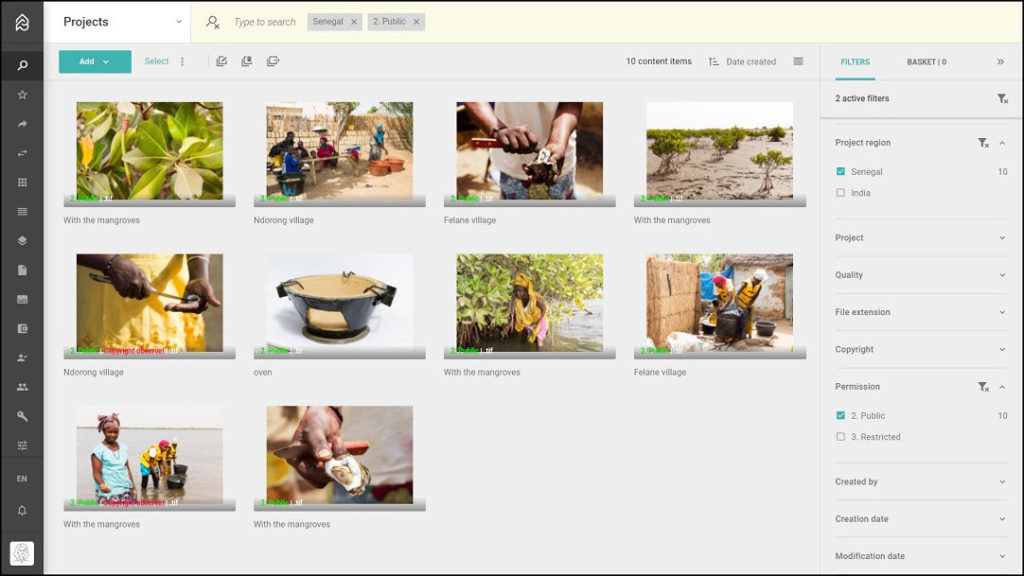
Always The Right Context At Your Fingertips
Whenever a user has found content and needs further reassurance whether this really is what he was looking for, or if that content can be used for a certain purpose, then that information is contextually provided for every smart tag with just the click of a mouse - for the project, the topics of a project or even a particular generic usage purpose.
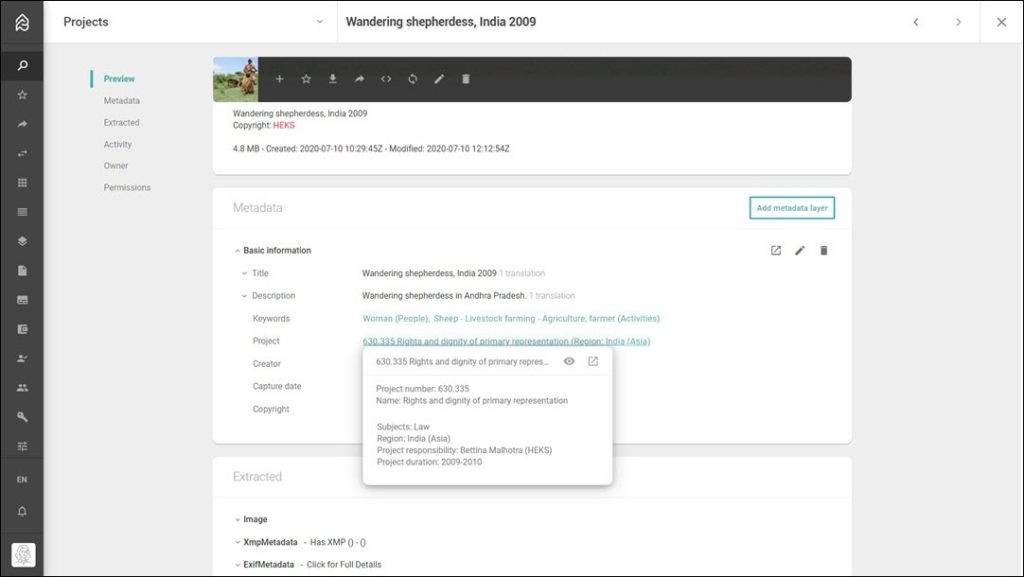
Achieving this goal among others with the Picturepark Content Platform is neither very complex nor expensive, all it requires is well structured data, which then becomes connected contextually with content via semantic relationships.
Master a List of Project Data
As a pre-requirement, we have to first introduce the list of projects into the content system. This list should include all relevant data associated with the project, program or mission, such as:
- Project name and project code/identifier.
- Topics or themes, with keywords or synonyms of each.
- Project abstract and description.
- Country or other location information.
- People in charge of the project.
- Time information, such as start dates.
- Partner organisations, special donors or grantors.
- Certifications for which the project qualifies.
- Related projects.
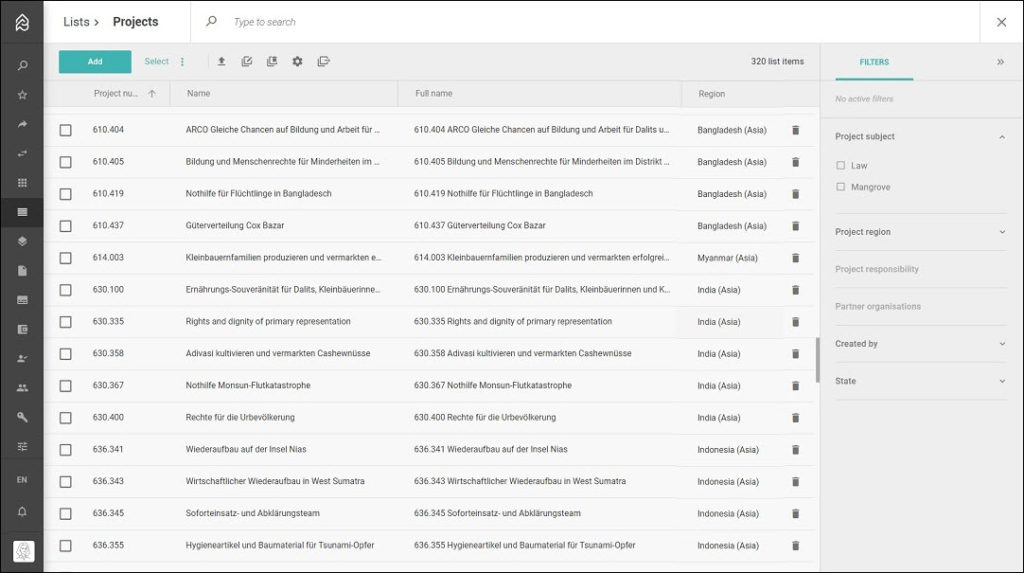
Such a list of projects might already exist in Sharepoint or a custom-built database, so it can be pushed over to the Picturepark Content Platform via an API; either at regular intervals or as changes happen. In case this is not possible or an NPO is using a spreadsheet for these projects then the project data can be manually imported using an Excel sheet which only takes a few simple steps.
In case you, as an NGO, are no longer satisfied with an existing solution, then you can also easily use the Content Platform for mastering project information directly and export it from there to wherever it is needed.
Expedited Tagging - Automate or Manual?
In an ideal world you have used a naming convention for all of your files, and these conventions would include a project code. You could then literally just drop these standardized files into Picturepark, which associates the content with the correct projects in a fully automated way - based on matched codes.
Let’s assume that this is not the case for your NGO, so you have to go the manual route. Luckily, even tagging project content manually is easy because you only need to add a single smart tag to the content, something you can do in batches for thousands of files at once - either while importing, or anytime thereafter.
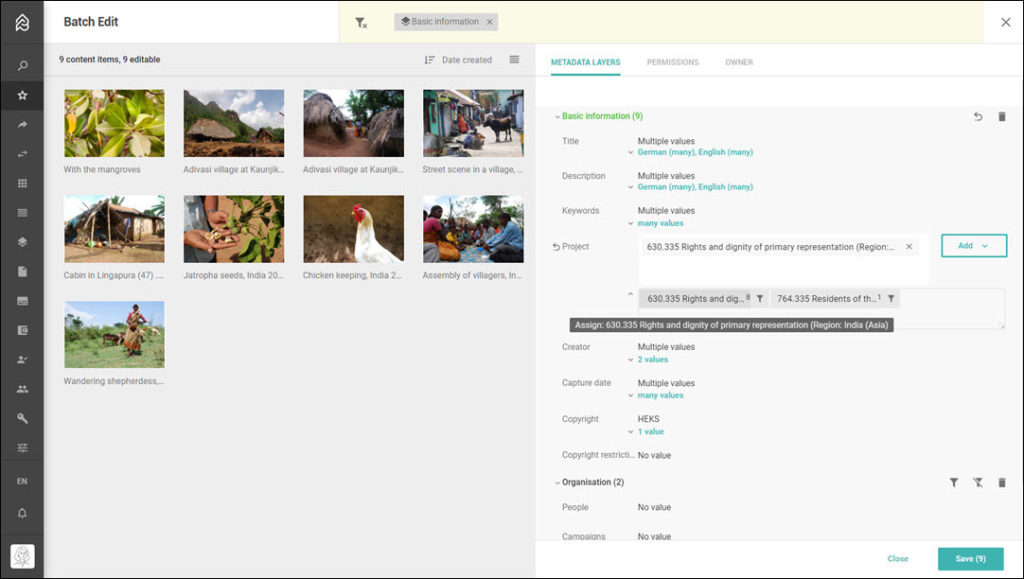
If you wish, you can conveniently add more detailed information such as names of people or generic keywords by the use of Adaptive Metadata and the batch editing capabilities of the Content Platform. And in case generic keywords are important: these can reliably be provided based on Artificial Intelligence (AI) when using the Clarifai Connector.
Maintain Absolute Control - At All Times
Depending on the requirements, the content that was imported, by for example field staff, will only be visible to select users within the system, such as administrators or content managers. These users can verify the smart tag applied or extend the tagging in more detail, initiate a consent workflows e.g. via the Consent Manager, and publish the content once the content and it’s metadata are fully complete. In short: no one can see or use content unless all red flags have been examined and it has been given the green light.
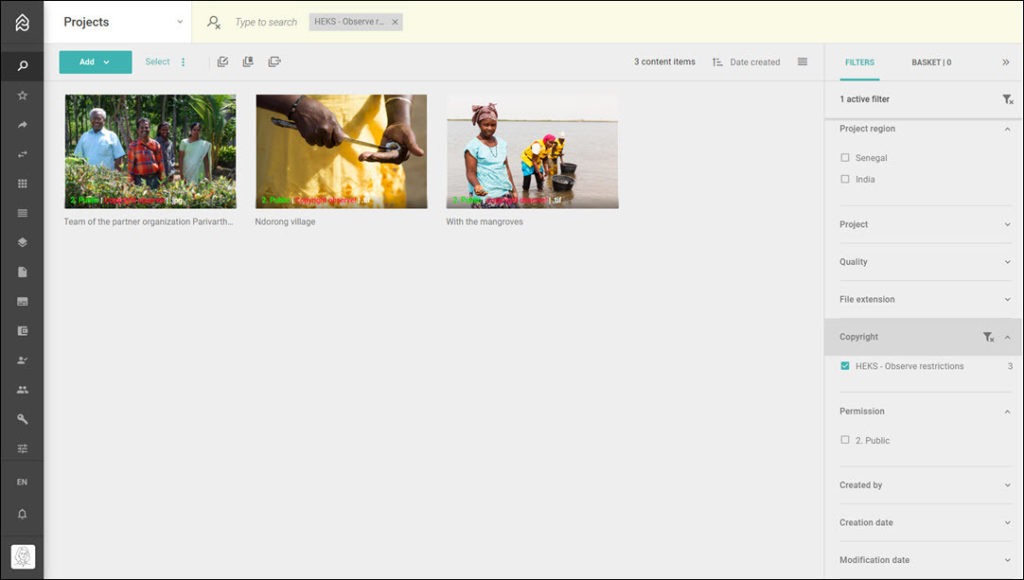
Manage Change Without Hassles
When using a modern content system that offers smart tags, such as the Picturepark Content Platform, then you are also in control of managing change reliably and easily. For instance, if a partner or the director changes for an existing project then you can change this in a simple step and a single location: directly on that item within the project list. From there it will propagate down instantly to all the content which is correspondingly associated with the smart tag.
Administrators can also change the schema of the project list, so that additional attributes or translations of project information can be added. Whenever projects need to be added, these either get imported via an Excel sheet from an external master data source, or if managed in the Content Platform directly, then privileged users can either add such new projects on the list, or directly when tagging the content:
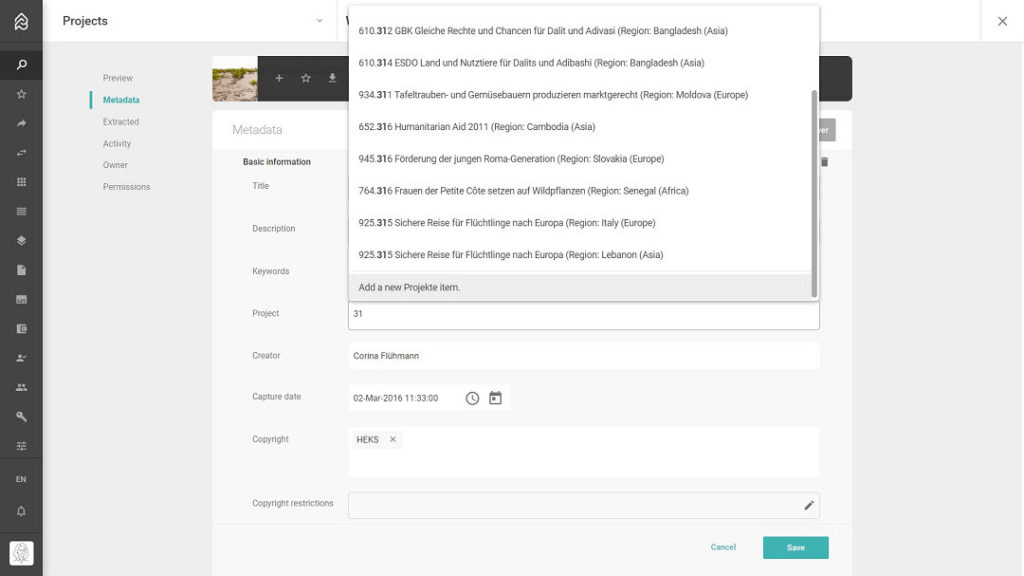
Results That Make All The Difference
This blog illustrates how NPOs or NGOs can use a single smart tag for adding worthwhile additional information to their growing amounts of content that not only streamlines the tagging of content but also improves finding the right content - and always puts content in the right context.
Granted, you cannot fully forego setting up a content system as well as creating, importing or maintaining a project and tagging content. But most of the information and relationships already exist, and the efforts for bringing this into place for a content system such as the Picturepark Content Platform are comparingly minimal.
Agile Steps For Moving Forward
Additionally, you don’t have to carry out all steps at once: Once a solid foundation and data model is brought into place, you can always improve by adding additional workflows that help you receive and manage consent, validate content according your defined quality gates, and more.
It’s all about getting started on saving time, for doing bigger and better things.
